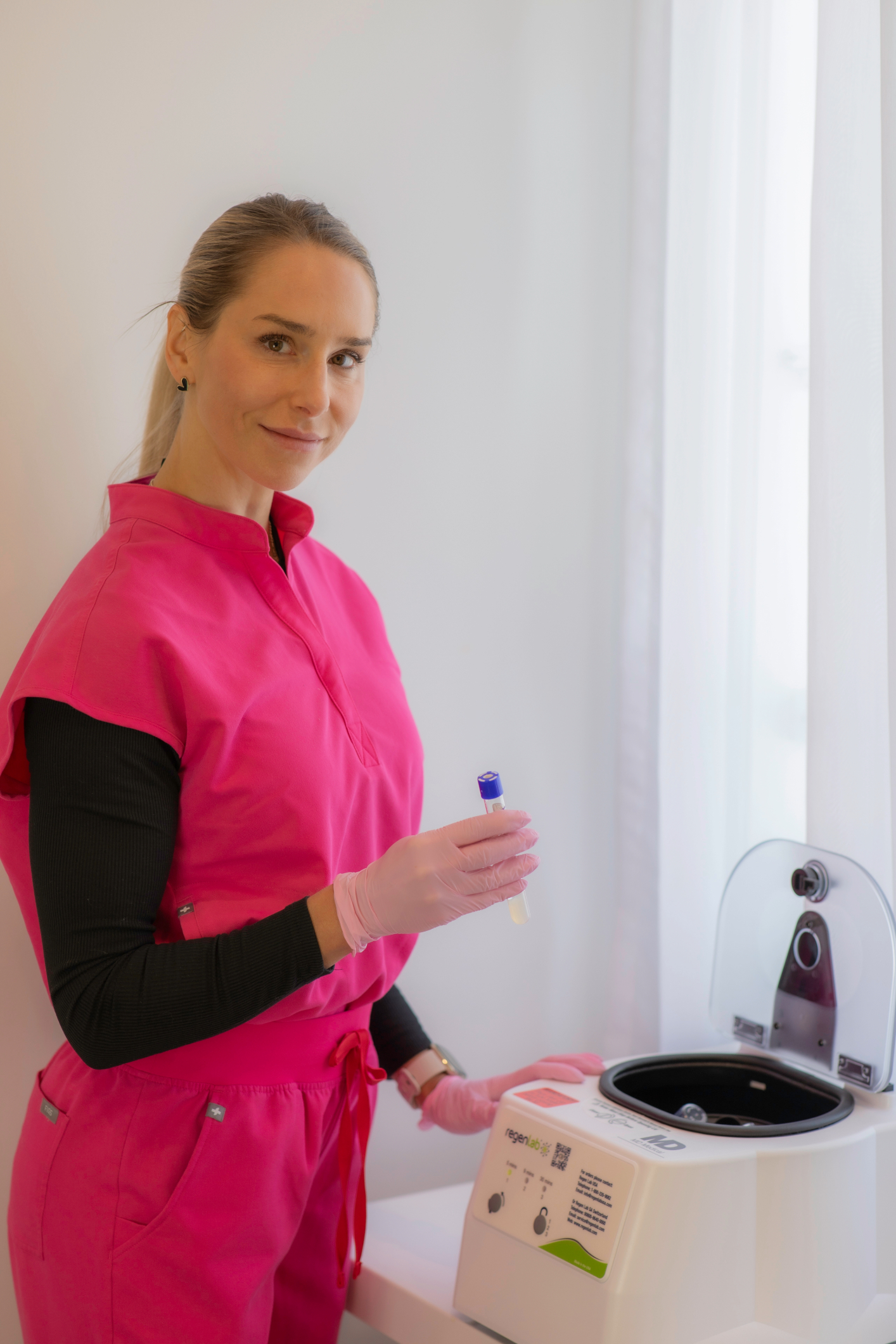Facial Treatment
Growth factor therapy for skin
Facial Treatment
What is a skin treatment with growth factors?
Growth factors are obtained by collecting a small sample of blood, similar to what is required for a standard laboratory test. The blood is placed in a specialized tube and spun in a centrifuge to separate its components. Once the process is complete, the portion of the blood containing growth factors is collected and prepared for administration.
Depending on the desired treatment, the blood-derived growth factor serum can be applied using various techniques and in different areas. For instance, it may be administered through microneedling, an injection, or a cannula. After an evaluation, your treating professional will recommend the most suitable technique based on your specific needs.
Platelets are a primary component of the blood used in this treatment. While their main role is to assist in clotting, they also release numerous growth factors that are directed to specific areas of the body to accelerate healing or regeneration. In aesthetic medicine, platelet properties are harnessed to rejuvenate the skin, treat dark circles and eye contours, repair certain skin damage, and expedite healing after ablative laser treatments.

Conditions
What conditions can growth factors address?
The Rejuvena Approach
What happens during a consultation for growth factor therapy for skin rejuvenation?
Review of your medical record
Photography
Discussion of your concerns
Here are the steps of the treatment:
Step 1:
Step 2:
sTEP 3:
A personalized approach
Why choose Clinique Rejuvena?
Growth factor therapy for skin
FAQ
The number of sessions depends on the condition being addressed. Typically, an initial series of three treatments spaced 4 to 6 weeks apart is recommended. For more severe skin concerns, such as acne scars, 6 to 8 sessions may be advised. Maintenance treatments are suggested every 6 to 12 months.
- Increased skin sensitivity to touch
- A sensation similar to a mild sunburn
- Dryness
- Redness and minor bruising, which typically subside within 5 to 7 days